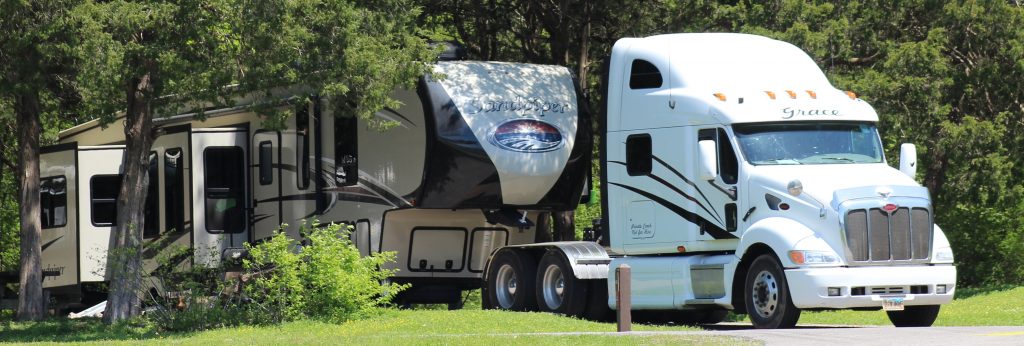
When we purchased our Sandpiper fifth wheel, we knew she was a beast that would need a big truck to haul her. At the time we had a Ford F250 with the 6.0L V8 engine. We took one trip to Glendo, Wyoming and decided very quickly to upgrade to a different type of RV hauler.
On that particular trip, the truck wouldn’t make more than 45 MPH pulling the long grade from Thornton to Ft. Collins along I-25. Once into Wyoming, we ran into a squall with strong winds, which easily pushed the rig around. We figured, if we continued on with our current truck, we’d blow the engine up in no time flat.
So, we started looking for an alternative. Newer pickups that have the capacity to haul her 15,500 lbs. are extremely expensive, even used. We didn’t want to buy something that just barely had the tow and payload capacity for us, and we certainly didn’t want to spend in the ballpark of $80K for one of the sturdier, stronger new pickups. We started discussing our options.
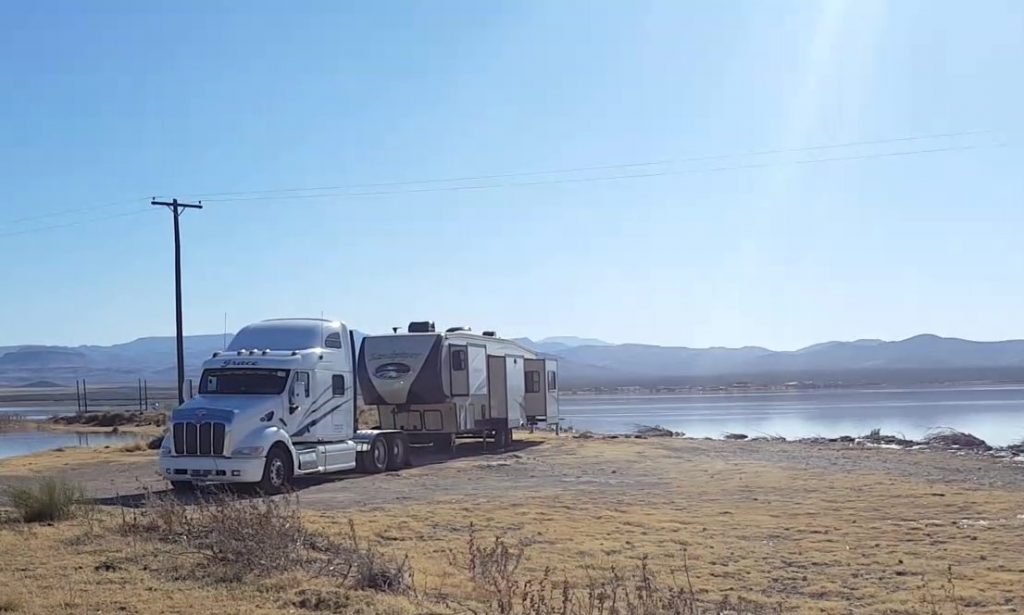
We had seen several fifth wheels on the highway being pulled by semi tractors, and talked about going with that option as an RV hauler. Bubba had been an over the road truck driver many years ago, so I knew he would have no issue handling such a truck (it turns out you don’t need to have truck driving experience to be able to drive one of these, although I’ll admit it does really help when it comes to maneuvering such a large rig). We were just afraid we might not be able to afford the price tag.
We began doing our homework, and were pleasantly surprised to learn that there are many used semi trucks available out there in the $25K to $35K price range. Most have been retired from fleet service, with many hundreds of thousands of miles of life left in them.
We spoke to a reputable heavy truck diesel mechanic prior to looking for a truck, and he suggested we look for a pre-2007 Peterbilt with a Cummins engine. He said having an older truck would avoid all the new emissions control hassles, and just about any diesel mechanic anywhere in the country could work on a Cummins.
Our search began.
I found a 2004 Peterbilt 387 with 926,000 miles on her, located just outside Grand Rapids, Michigan. The business was a diesel repair shop with a small sales department. I spoke with the salesman on the phone a few times in order to better ascertain what kind of condition the truck was in. He happily took extra photographs of the interior and exterior and sent them to me. He also had an oil sample pulled and tested, and we had our own mechanic review the results of the oil sample test.
Everything looked good, so we made arrangements to travel from Denver to Michigan to see her firsthand.
We arrived at night, after the dealership had closed, and had an appointment for the next day. Unable to control our curiosity, we drove to the dealership the night of our arrival and took our first look at her.
I remember being in awe of her size, standing next to her on that lot. She was pure white and almost glowed under the streetlights. We walked around her and gave her a good once-over, and felt assured our trip had been worth it.
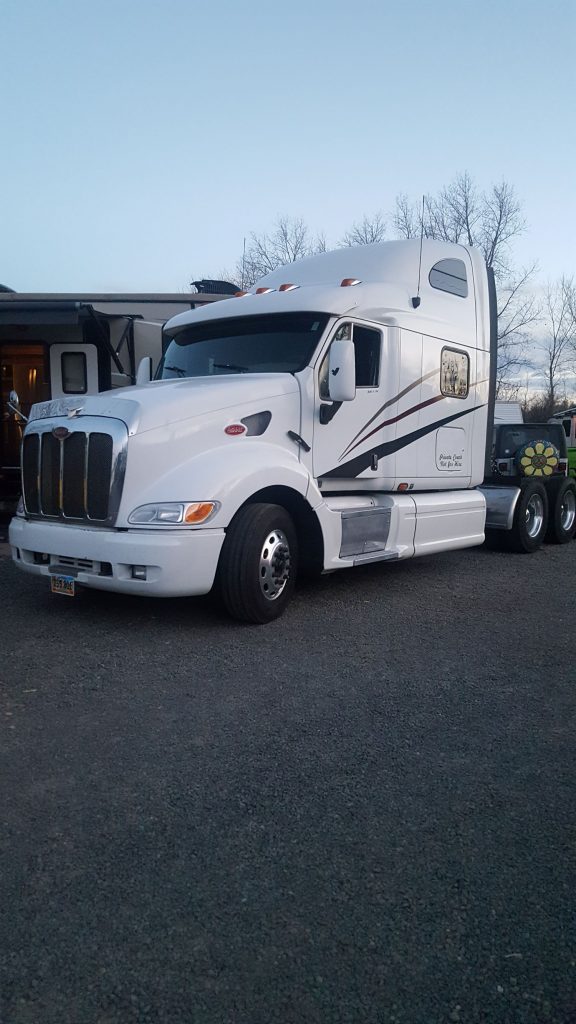
The next day, we finally had a chance to look her over inside, and take her on a test drive. Bubba had never driven an automatic semi before, so that was a new experience for him, but she drove well. The interior was a bit rough, mostly cosmetic issues from almost a million miles of work.
After a little negotiation with our salesman, we paid him $14,000 cash and drove out of the dealership with our new to us RV hauler!!
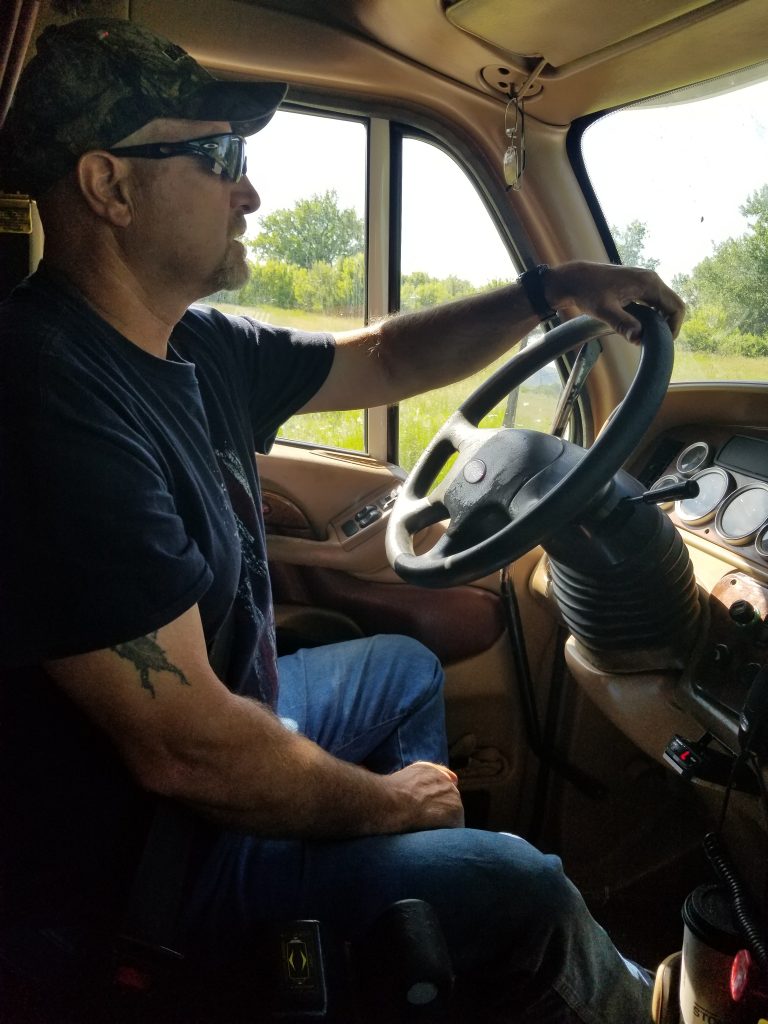
Our RV Hauler’s Specs
2004 Peterbilt 387
Cummins ISX engine
Meritor Autoshift transmission
232 inch wheelbase
Twin 135 gallon fuel tanks for a total of 270 gallons on board
7 MPG towing, 11 MPG bobtail
We usually travel 1200 miles between fuel stops, but could potentially go 1800 miles or more
Full sleeper with twin XL bed, refrigerator with freezer, coffee pot, coat closet and plenty of storage
Air ride cab and driver’s seat
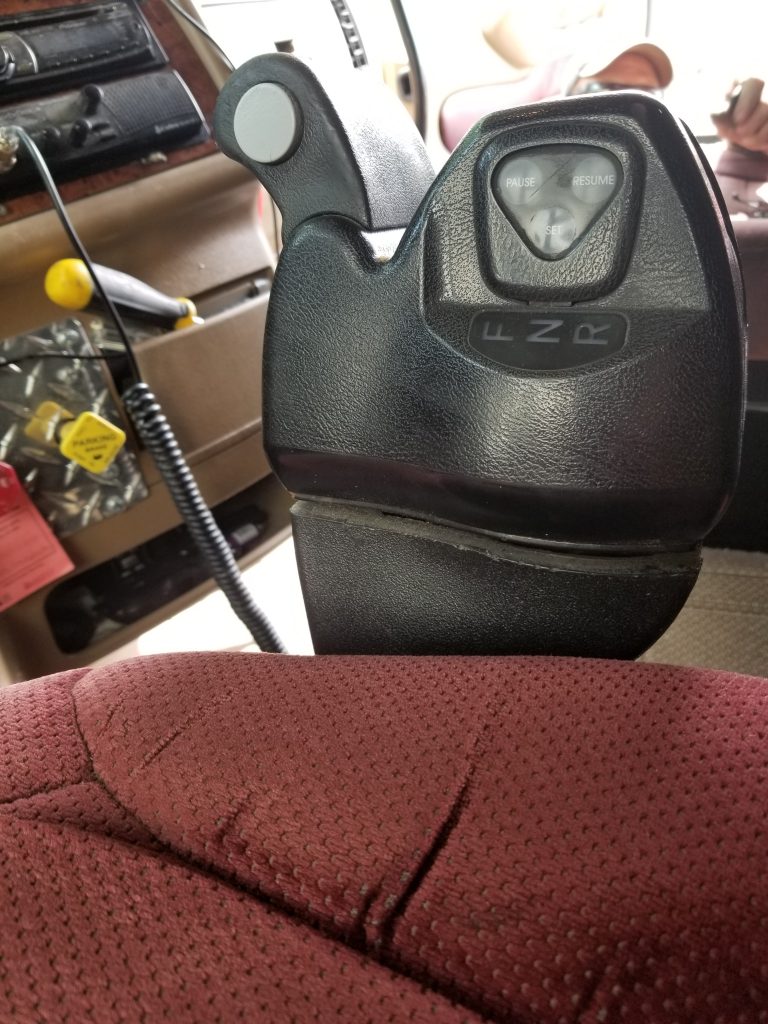
Autoshift gearshift 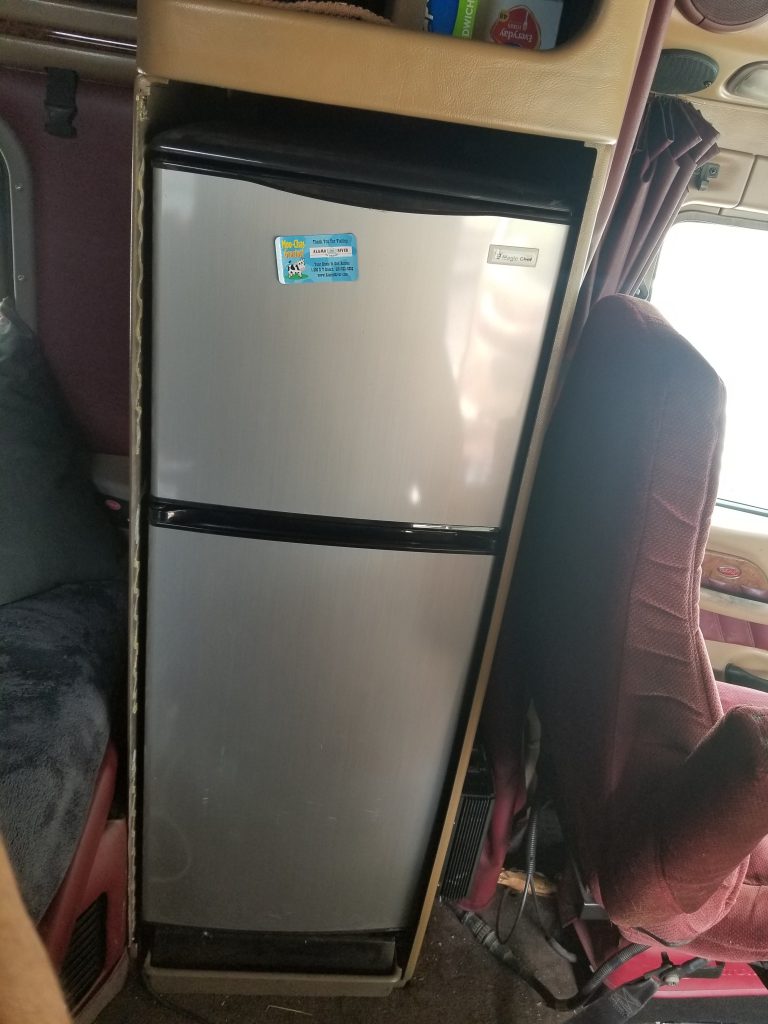
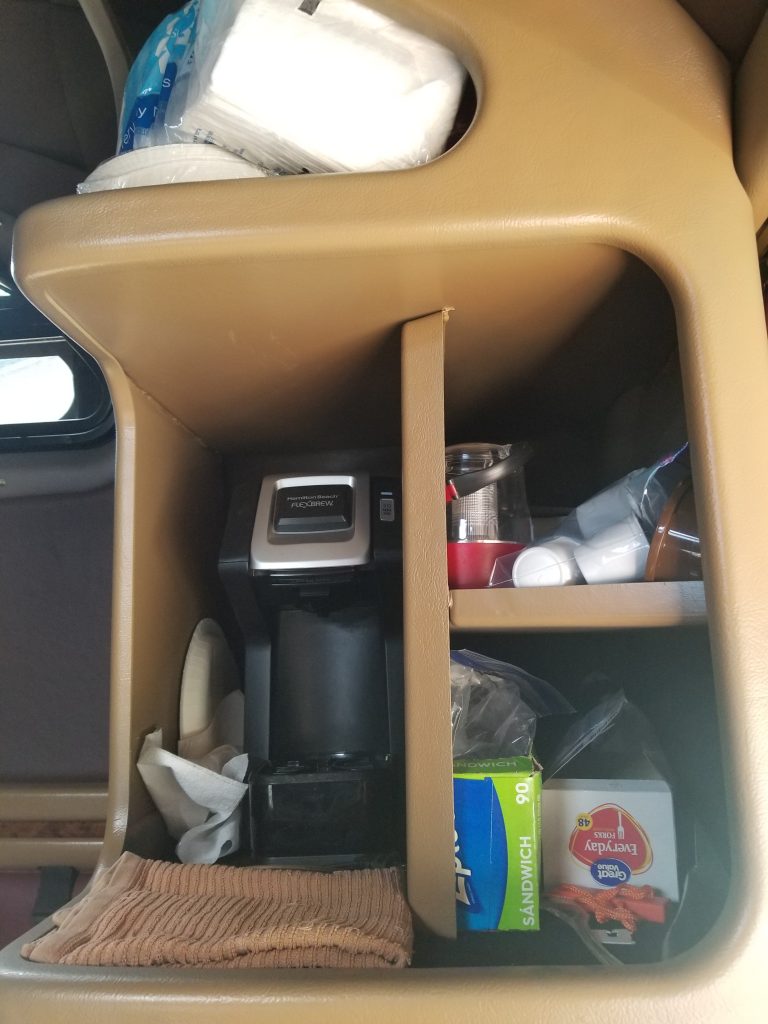
Our “kitchen” in the truck. 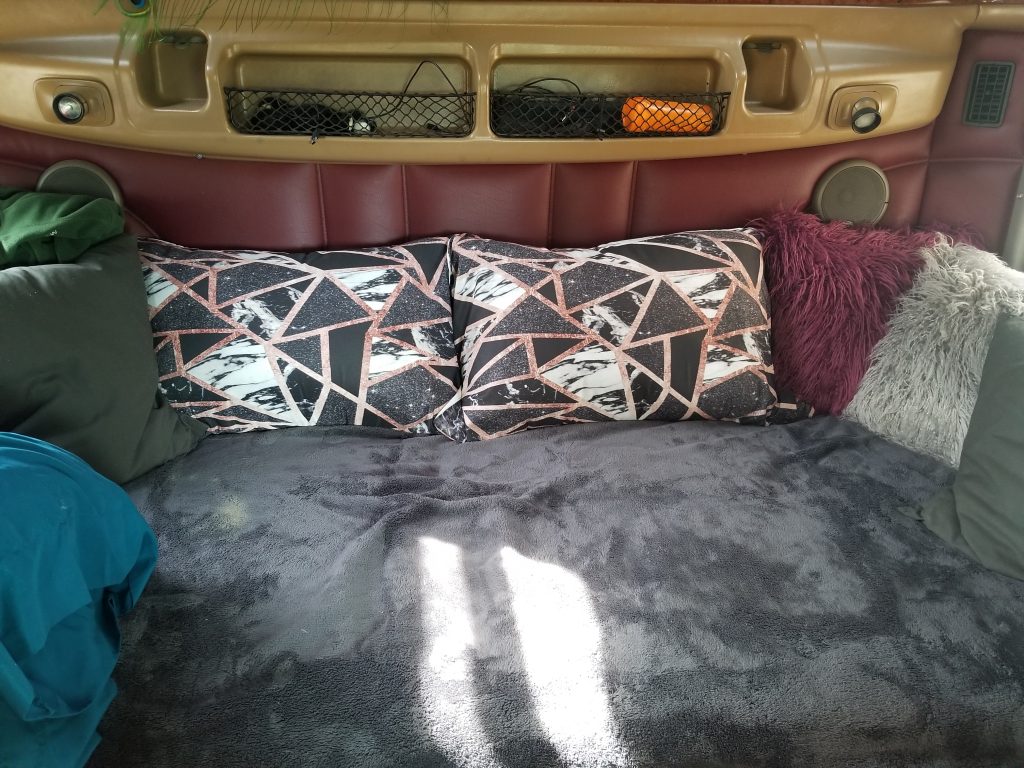
Our sleeper bed 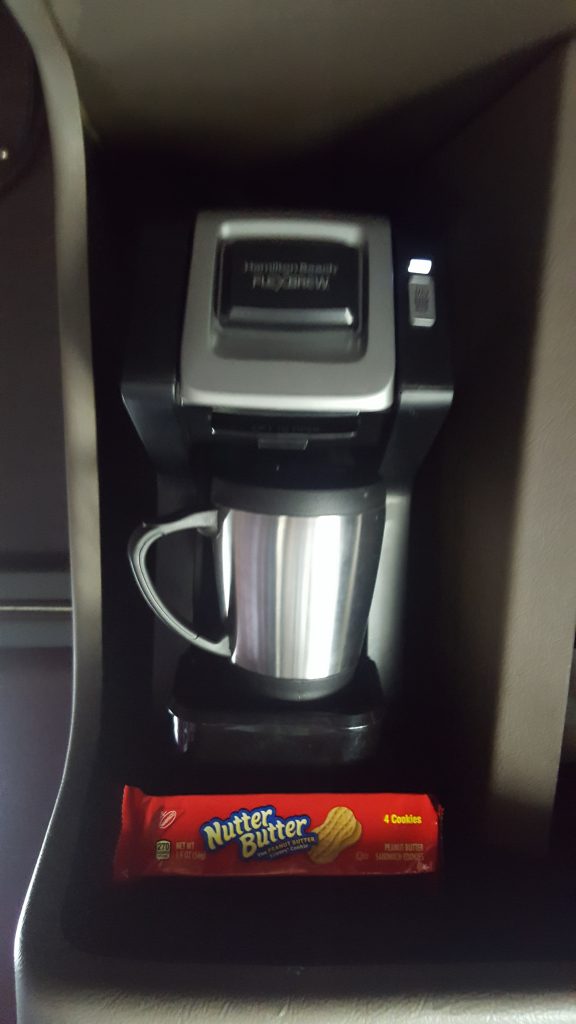
It’s great to have a cup of coffee and a snack on the road.
How We Converted Her Into an RV Hauler
We only had to change a couple of things to get our truck ready to pull our fifth wheel.
We removed the commercial fifth wheel hitch, then welded a steel plate on top of the truck’s frame.
We purchased a Hensley BD3 air ride fifth wheel RV hitch and mounted it on the new steel plate. We chose the air ride hitch to protect the trailer’s frame, which is subject to a rougher ride on a semi than on a pickup.
We also purchased a device called the Jackalopee. The truck wiring is connected into one side of the box and wiring to the trailer is run into the other side. The box makes the truck wiring “talk” to the RV wiring without any other modifications. The brake controller can also be wired through the Jackalopee.
Finally, we removed the air lines for semi trailer brakes since we would no longer need them, and they took up usable space on the back deck behind the sleeper.
Our Thoughts So Far
Overall we have been very happy with our truck purchase. She has provided an extremely safe, comfortable and stable way to travel and proven herself to be an excellent RV hauler.
We use her as our daily driver and have had no problems at all with that, although finding parking in a large city can be tricky.
We have found we need a little more maneuvering room when backing into RV sites in RV parks. So far the only people who have freaked out over the size of our rig were at a couple of workamping jobs, where they had photos of the rig ahead of time (hehe).
We have considered adding a Smart car to the rear deck, in order to have a smaller vehicle to run around in when we’re in town. While we both see the benefit of having a smaller vehicle available, we aren’t in any hurry. We don’t feel like we miss out on anything in our big rig RV hauler!
